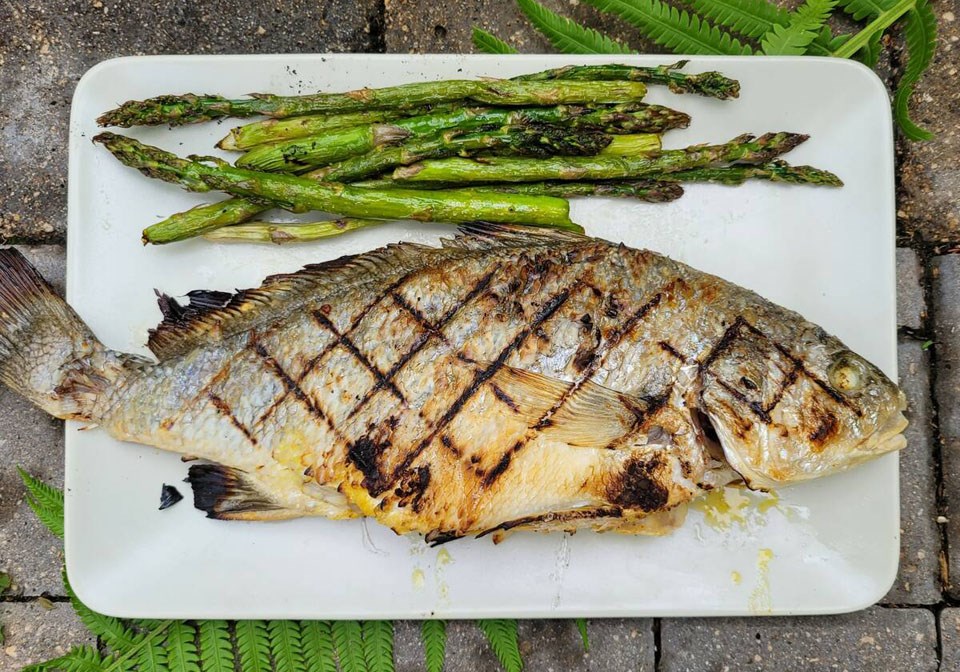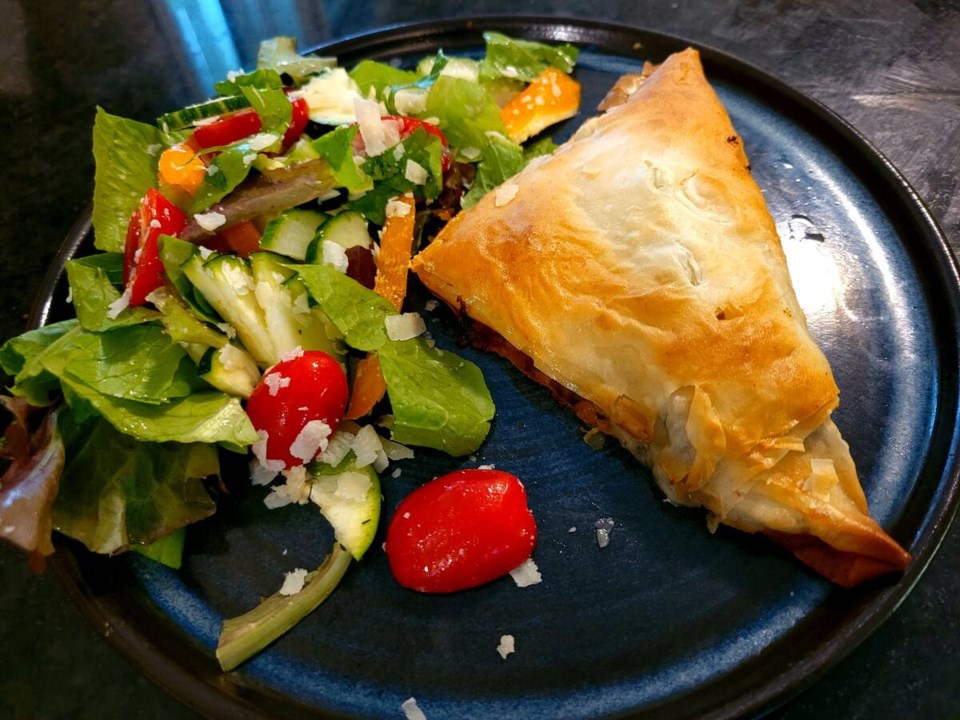WESTERN PRODUCER — After decades of mediocre fish preparation, I have come to learn the importance of how an angler handles, processes and cooks their catch after getting it off the hook. Now that I pay more attention, fishing has become a more complete, satisfying experience.
Handling fish after the catch
Fish deteriorate faster than just about any other source of wild protein. Warm days don’t help.
The planning of any trip should include a means to get the fish home in peak condition, especially in the dog days of summer.
One of my boats has a live well with a water circulation system, which helps to keep fish alive. Anything I plan on keeping goes there.
I’m not a big fan of stringers, but I will use them if I don’t have access to a live well. I dispatch the fish as soon as I have access to a cooler and ice.
If I can’t keep fish alive while out on the boat, I bring along a cooler big enough to hold ice packs and my haul for the day.
I dispatch fish with a sharp blow to the head. I then bleed them out immediately. Do this by cutting through the narrow piece of flesh below the gills. Fillets from bled out fish will come out whiter.
Processing fish
Whole fish destined to be baked, barbecued or smoked intact need to be scaled. Unless it’s a trout — their scales are too small to worry about. An inexpensive scaling tool, usually shaped in a triangle, makes this much easier, but the blunt side of a knife blade will also work.
Once scales are removed and the fish washed off, carefully open the belly from the anal vent to the gills and remove the viscera and gills. Fish kidneys, which are embedded against the spinal column, can be scraped out with a teaspoon.
Whitefish and trout are good candidates for cooking whole — if I have a whitefish, it’s always done whole on the barbecue with a simple stuffing — but most other species are usually filleted before eating.

A well-prepared fish fillet should be completely deboned, which means removing rib bones and the pin bones. | Photo by Tim Sopuck
Filleting techniques are best learned by watching. If you don’t have a mentor, there are dozens of videos on YouTube.
After watching a few, my recommendation is “” This video has excellent information for beginners and experts alike. Techniques highlighted here will work for pretty much any fish except pike, which have a different bone structure. Most anglers will be familiar with the pesky “Y” bones in that species.
For them, check out “” or “,” also on YouTube.
If you watch a few videos, you’ll see that technique can vary between presenters. Use what works best for you and don’t lose focus on quality control and safe knife practices, which includes keeping your blade sharp. I have also taken to wearing a protective filleting glove on my non-knife hand.
Freezing and storing fish
Fish that aren’t going to be eaten fresh should be frozen as quickly as possible. I don’t own a vacuum sealer, but I have come to rely on multiple layers of plastic wrap, which I think does as good a job.
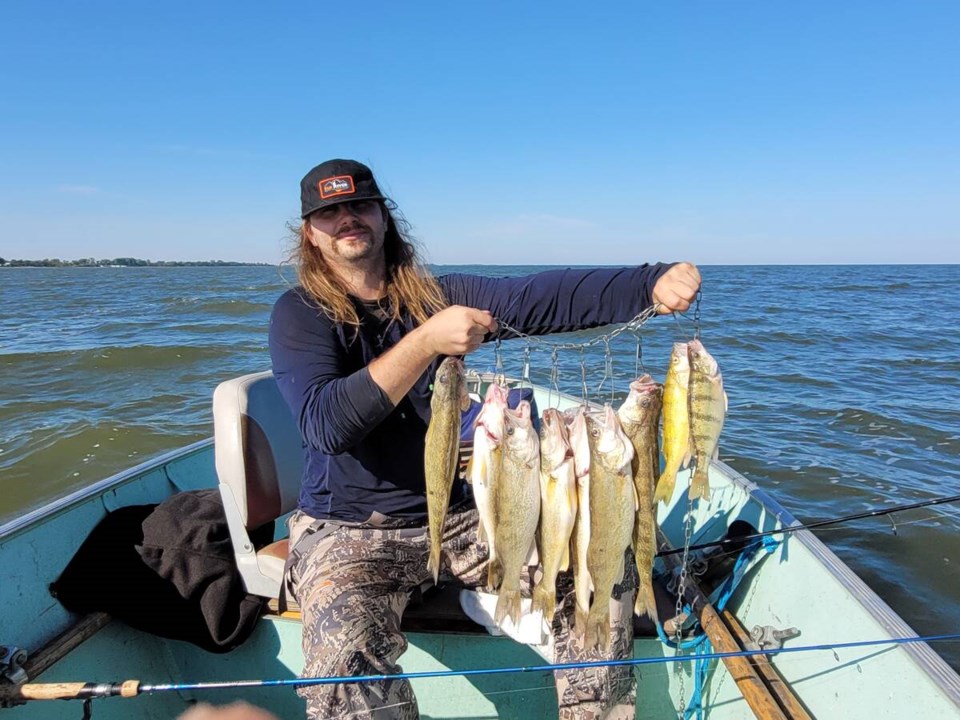 Appropriate handling and processing practices are needed before a haul of fish is translated into a great meal. | Photo by Tim Sopuck
Appropriate handling and processing practices are needed before a haul of fish is translated into a great meal. | Photo by Tim Sopuck
I start with a long enough piece to wrap up fillets like I might a present, to ensure that the ends won’t leak air. Then I add two or three more layers and finish with a couple of wraps of masking tape near each end to stop air leakage. I can store fish for months this way without any drying out or taint that I can detect.
After years of sorting through random fish packages in the freezer with uncertain catch dates, I’ve become pretty fussy with labelling. Every package has the species, catch date and weight marked. I’ve learned that a package weight around 275 grams works best for a meal for my wife and I, and so try to match up my fillets accordingly.
Preparing fish for the table
Wild-caught fish have always been a big part of my diet.
This was especially true when I spent a year in northern Manitoba. We ate fish almost daily and sometimes twice a day. Despite the constant in main protein, the variety of meals was unexpected.
From my Cree hosts and mentors, I learned to appreciate the food value of many species, as well as different parts of a fish.
Livers of a number of fish are tasty, and you get a vitamin D hit as a bonus. Simmered fish heads, especially sucker and whitefish, are juicy and delectable. It’s no coincidence that traditional fish soup recipes often start with fish heads for stock. Perhaps the most unexpected treat was cleaned and simmered pike and whitefish stomachs — fish tripe, if you will. They have a pleasant, chewy texture and are delicately flavoured.
I’m not recounting this list of weird things to eat from fish because you need to try them. It’s more to convey how fun it is to break out of the “everything has to be pan-fried” mold.
I eat lots of pan-fried fish, but I also bake, barbecue, simmer, pickle, make fish cakes and pressure-can. A range of techniques makes dinner more interesting.
Shore lunch
The freshest fish you’ll ever eat will come from a shore lunch frying pan. Shore lunches served up by experienced guides at fishing lodges start with a campfire, a large frying pan and a pound of Tenderflake lard. Fish fillets are dipped in a coating (often the guide’s secret concoction). Add in deep fried potatoes and canned corn heated next to open flames and you have a culinary memory for life.
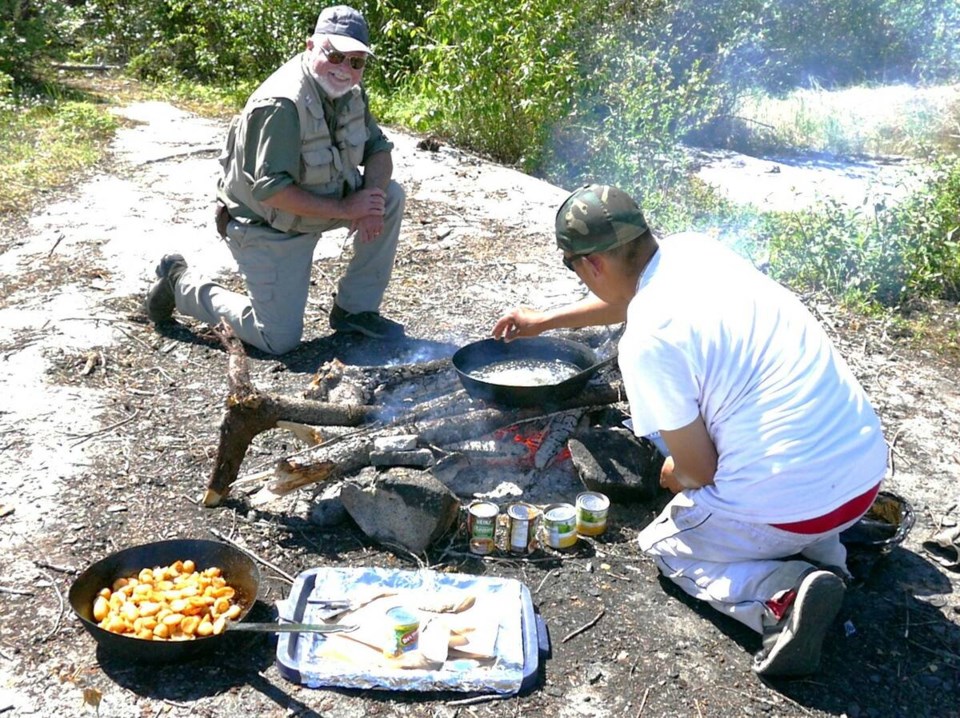 A classic shore lunch of deep fried fish, potatoes, canned beans and corn helps to make fishing trips all the more memorable. Photo by Tim Sopuck
A classic shore lunch of deep fried fish, potatoes, canned beans and corn helps to make fishing trips all the more memorable. Photo by Tim Sopuck
I rarely do shore lunch anymore because of the work involved. That said, I came up with an interesting “cheat” on a recent trip with my son.
We were targeting smallmouth bass and I settled on making ceviche for lunch. This is a traditional Peruvian dish, for which smallmouths are especially well suited. Our first bass was dispatched, filleted and dropped in pickling marinade, along with extra ingredients. Five hours later, lunch of ceviche bass and taco chips was served as we relaxed along a picture-postcard shoreline. The fun of a shore lunch was achieved with a tenth of the work.
When I lived up north, a standard meal was whole whitefish roasted over an open fire. This utensil-free meal started by butterflying the fish and splaying it out on a frame of green willow sticks and stems. After careful roasting at the edge of a fire, mostly skin side down, it was presented on a bed of freshly cut spruce boughs. The spicing? Salt, pepper and wood smoke.
In the home kitchen
Rather than go through loads of recipes, I am mostly going to run through some possible cooking methods, for which there are many recipe variations available on the internet.
Most people already have their favourite pan-frying recipes. My base coating is equal parts white flour and buckwheat flour (the latter produces a lovely brown coating), plus some Panko breadcrumbs, salt, lemon pepper and cumin. After soaking my fillets in buttermilk for about 30 minutes, I coat them in my seasoning and fry at a medium heat in a mix of butter and olive oil. I like to ensure that the fish are cooked through, but not dry.
So many of our fish species shine in baked recipes. Pike, bass and larger walleye fillets shine when oven-baked in a sauce. Mine usually starts with mayo, olive oil and a bit of mustard, to which I add chopped capers, diced onion and a hit of lime juice. A layer of finely sliced red pepper and zucchini on top finishes off the star of the meal, which can be served with rice or potatoes. Again, cook the fish through, but don’t overcook.
If I am cooking for company and want a fish dish that shows like a fine dining experience, I wrap a mix of fish, veggies and sauces in phyllo dough. It is a bit fussy to prepare, but looks fantastic on the plate.
I haven’t even touched on options for soup, pickling or canning, and apologies to those who were looking for a recipe for fish livers. In the end, follow best practices for handling, processing and storing fish, and open your mind to the limitless culinary possibilities that Manitoba’s fish offer.
Recipes
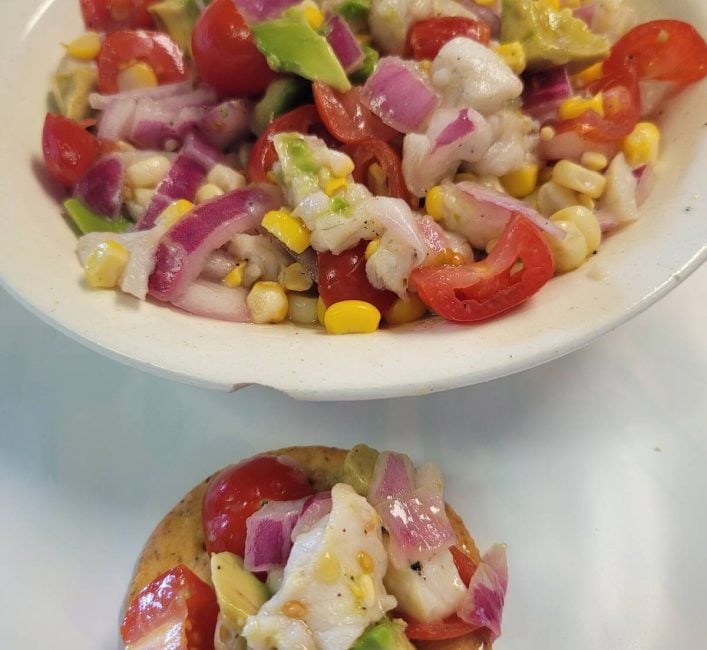 Ceviche, fish in a marinade of in citrus juice, can be made with perch, bass, drum or trout, and makes an excellent appetizer with taco chips or crackers. | Photo by Tim Sopuck
Ceviche, fish in a marinade of in citrus juice, can be made with perch, bass, drum or trout, and makes an excellent appetizer with taco chips or crackers. | Photo by Tim Sopuck
Bass ceviche
For this recipe, smallmouth bass or trout work best, but a small freshwater drum would also be excellent.
I don’t use pike or walleye, as these species can host a parasite (Diphyllobothrium latum) that is effectively killed by the heat of frying or baking, but may not be controlled by the marinade process.
Ingredients:
- One bass, about 35 centimetres long, filleted boneless and cut into one-centimetre cubes
- Juice and zest of three limes, or equivalent bottled lime juice
- Half a medium onion, diced fine
- One avocado, diced
- 1/3 cup tomatoes, diced. Cherry tomatoes are best.
- 1/3 cup red pepper, diced
- 1/2 cup cilantro
- Salt, pepper and hot sauce to taste
- 1 tsp sugar, to taste
Directions
- Drop the cubed fish and diced onions in the juice and zest of the limes and make sure that the juice at least wicks up and touches all the pieces. Place in the fridge.
- Remaining ingredients can be added a couple of hours later. Again, return to the fridge.
- The “cooking” process is achieved by the citric acid, which denatures the fish proteins, and it’s progressive. After about five hours, the fish is significantly, but not completely, cooked through. I like to tuck in at this point, but if you want the marinade to go right through the fish, eight hours or more are required.
- To eat, spoon the mix onto taco chips or larger crackers. This is an excellent appetizer, but I find folks generally dig in and eat too much and may spoil their main course
Baked phyllo fish
Most any boneless fish works in this recipe and, because of all the ingredients, a small amount of fish can go a long way. Thicker fillets should be split longitudinally. This recipe serves six.
Ingredients
- One package of frozen phyllo dough
- 450 grams of fish fillets
- ½ cup crumbled feta
- 1/3 cup pesto
- Small package of spinach or ½ pound of asparagus, sliced lengthwise and chopped to five-centimetre lengths
- Salt, pepper
- 1/3 cup melted butter
Directions
- If you haven’t worked with phyllo dough, or folded up phyllo pockets, watch this YouTube video: .
- Take the phyllo package out to thaw about four hours ahead of time.
- Lay out a full-size sheet on a clean table, coat with butter and lay another sheet on top of it. Repeat this two more times so you have three, two-layer sheets on the table. Score the sheets lengthwise to create six pieces.
- Lay down a piece of fish fillet, spread on a tablespoon of pesto, and sprinkle two tablespoons of feta on top. Top with the vegetables. Don’t overdo the quantity, or the package won’t fold properly. Proceed with folding, as per instructions provided in the video link.
- Place the six pieces on a large baking sheet and cook at 400 F for about 20 minutes. The phyllo will be rich, golden brown and the fish should be cooked through.
- After resting for a few minutes, serve with salad.
About the author
Related Coverage
